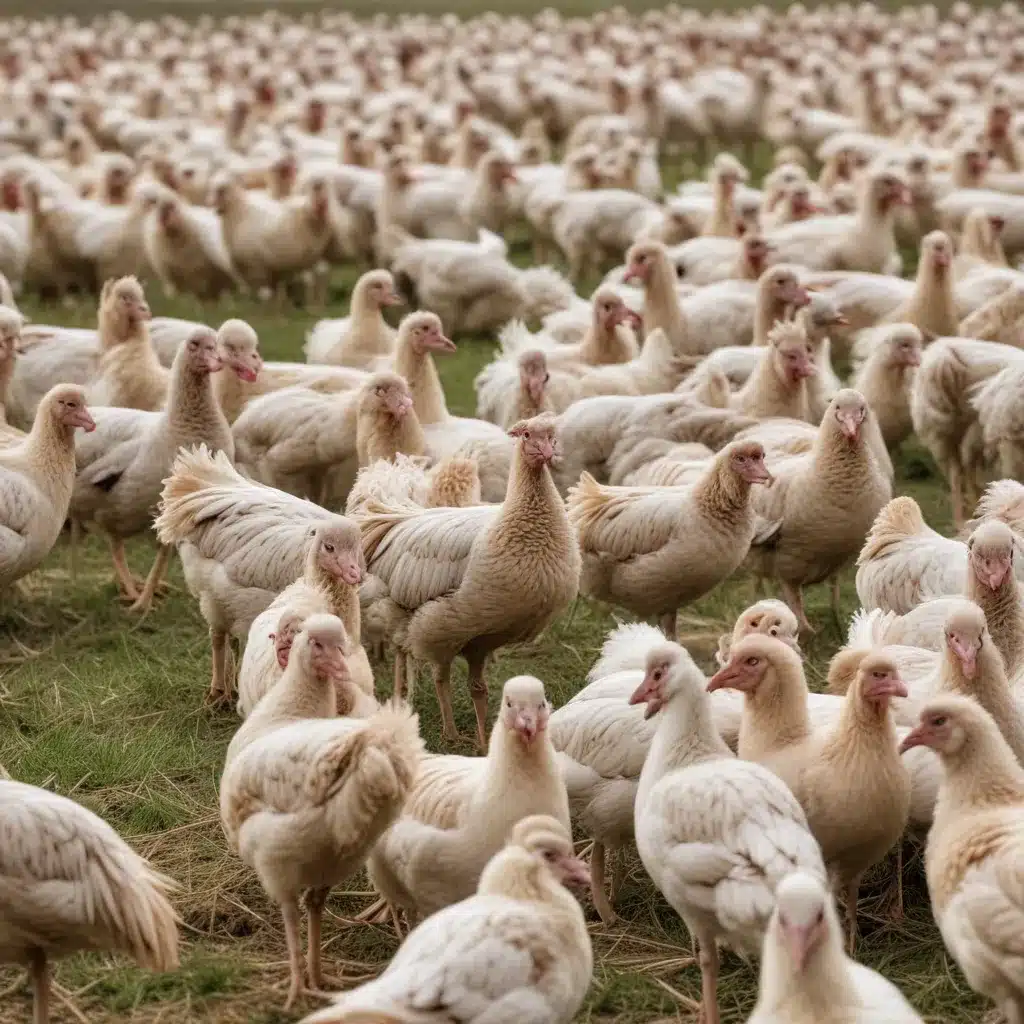
Avian Welfare and Environmental Considerations
As an experienced avian caretaker, I’ve learned that the health and well-being of our feathered friends is intricately tied to the environment in which they live. Just like us, our avian companions are highly sensitive to changes in temperature, humidity, air quality, and other ecological factors. By understanding the unique physiology and adaptations of birds, we can create living spaces that minimize environmental stressors and allow our flocks to thrive.
Avian Physiology and Adaptations
Birds have remarkable physical characteristics that allow them to survive and even excel in a wide range of habitats. Their lightweight, streamlined bodies and powerful wings enable flight, while their feathers serve as both insulation and aerodynamic features. The intricate structure of feathers, with their delicate barbs and barbules, traps air to regulate body temperature and provide protection from the elements.
Thermoregulation is a critical function for avian species. Unlike mammals, birds do not sweat to cool themselves. Instead, they rely on mechanisms like panting, adjusting their feather positions, and increasing blood flow to exposed areas like the comb and wattle. This allows them to maintain a consistent internal body temperature, typically around 104°F (40°C), even in the face of dramatic external temperature changes.
Environmental Stressors
While birds are remarkably hardy, they can still face significant challenges from their environment. Extremes in temperature, whether hot or cold, can be detrimental to their health and wellbeing. Prolonged exposure to temperatures above 95°F (35°C) or below 40°F (4°C) can lead to heat stress or hypothermia, respectively.
Humidity is another factor that can impact avian welfare. Dry air can cause dehydration and respiratory issues, while excessive moisture can lead to mold growth and the spread of pathogens. Maintaining proper air flow and ventilation is crucial to keeping humidity levels in the optimal range of 50-70%.
Poor air quality, whether from airborne particulates, noxious fumes, or inadequate oxygen levels, can also stress your feathered friends. Exposure to ammonia from accumulated waste, for example, can cause respiratory distress and eye irritation. Ensuring your birds’ living space is well-ventilated and free of pollutants is essential.
Poultry Housing and Management
Shelter and Enclosure Design
Providing appropriate shelter is one of the most important aspects of avian care. The coop or aviary should be designed to protect your flock from extreme temperatures, precipitation, and wind. Proper insulation, whether in the form of thick walls, reflective roofing, or specialized materials, can help regulate the internal environment.
Ventilation is also crucial – stagnant air can lead to the buildup of harmful gases and excess moisture. Strategically placed vents, fans, and windows will promote air flow and prevent respiratory issues. Consider incorporating natural ventilation techniques, such as ridge vents or louvered panels, to minimize energy use.
Flock Health and Nutrition
The health and nutrition of your birds go hand-in-hand with their environmental conditions. Stress caused by temperature extremes, poor air quality, or other factors can weaken the immune system and make your flock more susceptible to illness. Implementing feeding practices that reduce stress, such as providing ample clean water, a balanced diet, and supplementary vitamins and minerals, can bolster their defenses.
Certain nutrients, like vitamin E and selenium, are particularly important for helping birds cope with environmental stressors. Consult with an avian veterinarian or poultry nutritionist to ensure your flock’s diet meets all their needs.
Extreme Weather Events and Emergency Preparedness
Mitigating Weather-related Risks
Unpredictable weather patterns driven by climate change can pose significant threats to our feathered companions. Preparing for floods, droughts, and severe storms is essential to safeguarding your flock.
Elevating coops and aviaries, reinforcing structures, and having backup power sources on hand can help you weather the storm. Stockpiling emergency supplies like food, water, and first aid kits ensures you can continue caring for your birds even when the power goes out.
Post-disaster Recovery Strategies
In the aftermath of an extreme weather event, carefully assessing any damage to your birds’ living space and providing appropriate care is crucial. Inspect for structural integrity, clean up debris, and address any issues with temperature, humidity, or air quality before reintroducing your flock.
If birds have been displaced or injured, work closely with avian veterinarians and wildlife rehabilitation centers to ensure their safe return and full recovery. Restoring the natural environment, through measures like replanting vegetation or rebuilding shelters, can also aid in your flock’s long-term wellbeing.
Integrating Sustainable Practices
Renewable Energy Solutions
As responsible avian caretakers, we have a duty to minimize our environmental impact while still providing the best possible care for our feathered friends. Incorporating renewable energy sources, such as solar, wind, or geothermal power, can reduce your reliance on the grid and ensure a consistent, eco-friendly source of electricity for your coop or aviary.
These sustainable solutions not only lower your carbon footprint but also offer reliable backup power in the event of grid failures or extreme weather.
Waste Management and Recycling
Effective waste management and recycling are essential components of sustainable poultry keeping. Composting soiled litter, feathers, and other organic matter can provide nutrient-rich soil amendments for your gardens or pastures. Water conservation and recycling techniques, such as rainwater harvesting or greywater systems, can reduce your overall resource consumption.
By closing the loop on waste, we can create a more circular and environmentally-friendly approach to avian care – one that benefits both our birds and the planet they call home.
As an experienced avian caretaker, I’ve seen firsthand the profound impact that environmental conditions can have on the health and wellbeing of our feathered friends. By understanding their unique physiological needs, implementing thoughtful housing and management practices, and embracing sustainable solutions, we can create a thriving, stress-free environment for our flocks to flourish. The health and happiness of our birds is our top priority, and I’m committed to sharing this knowledge to help other avian enthusiasts provide the best possible care. Visit Mika Birds Farm to learn more about our sustainable approach to poultry keeping and explore the resources available to support your avian companions.


